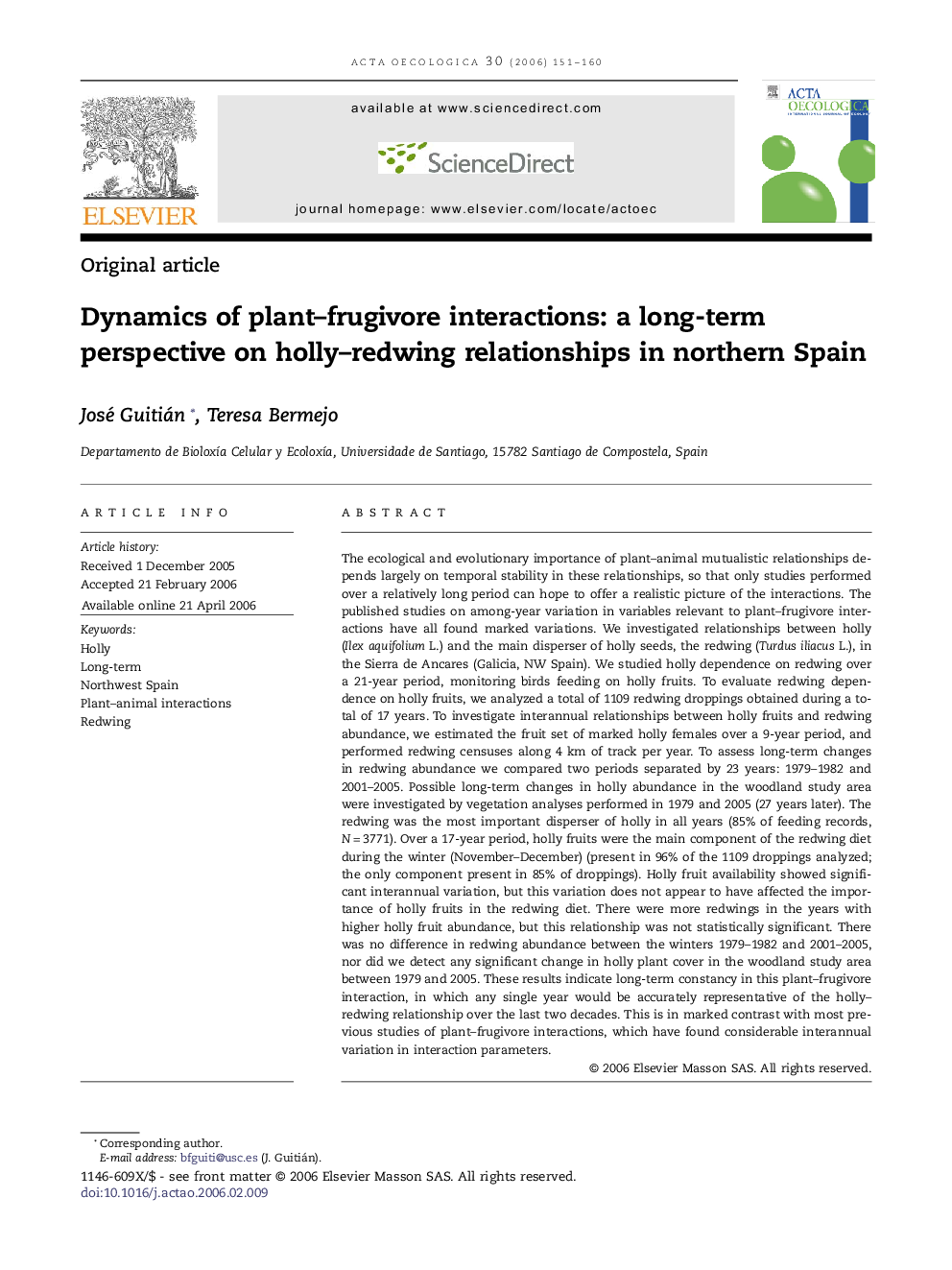| Article ID | Journal | Published Year | Pages | File Type |
|---|---|---|---|---|
| 4381632 | Acta Oecologica | 2006 | 10 Pages |
Abstract
The ecological and evolutionary importance of plant-animal mutualistic relationships depends largely on temporal stability in these relationships, so that only studies performed over a relatively long period can hope to offer a realistic picture of the interactions. The published studies on among-year variation in variables relevant to plant-frugivore interactions have all found marked variations. We investigated relationships between holly (Ilex aquifolium L.) and the main disperser of holly seeds, the redwing (Turdus iliacus L.), in the Sierra de Ancares (Galicia, NW Spain). We studied holly dependence on redwing over a 21-year period, monitoring birds feeding on holly fruits. To evaluate redwing dependence on holly fruits, we analyzed a total of 1109 redwing droppings obtained during a total of 17Â years. To investigate interannual relationships between holly fruits and redwing abundance, we estimated the fruit set of marked holly females over a 9-year period, and performed redwing censuses along 4Â km of track per year. To assess long-term changes in redwing abundance we compared two periods separated by 23Â years: 1979-1982 and 2001-2005. Possible long-term changes in holly abundance in the woodland study area were investigated by vegetation analyses performed in 1979 and 2005 (27Â years later). The redwing was the most important disperser of holly in all years (85% of feeding records, NÂ =Â 3771). Over a 17-year period, holly fruits were the main component of the redwing diet during the winter (November-December) (present in 96% of the 1109 droppings analyzed; the only component present in 85% of droppings). Holly fruit availability showed significant interannual variation, but this variation does not appear to have affected the importance of holly fruits in the redwing diet. There were more redwings in the years with higher holly fruit abundance, but this relationship was not statistically significant. There was no difference in redwing abundance between the winters 1979-1982 and 2001-2005, nor did we detect any significant change in holly plant cover in the woodland study area between 1979 and 2005. These results indicate long-term constancy in this plant-frugivore interaction, in which any single year would be accurately representative of the holly-redwing relationship over the last two decades. This is in marked contrast with most previous studies of plant-frugivore interactions, which have found considerable interannual variation in interaction parameters.
Related Topics
Life Sciences
Agricultural and Biological Sciences
Ecology, Evolution, Behavior and Systematics
Authors
José Guitián, Teresa Bermejo,
